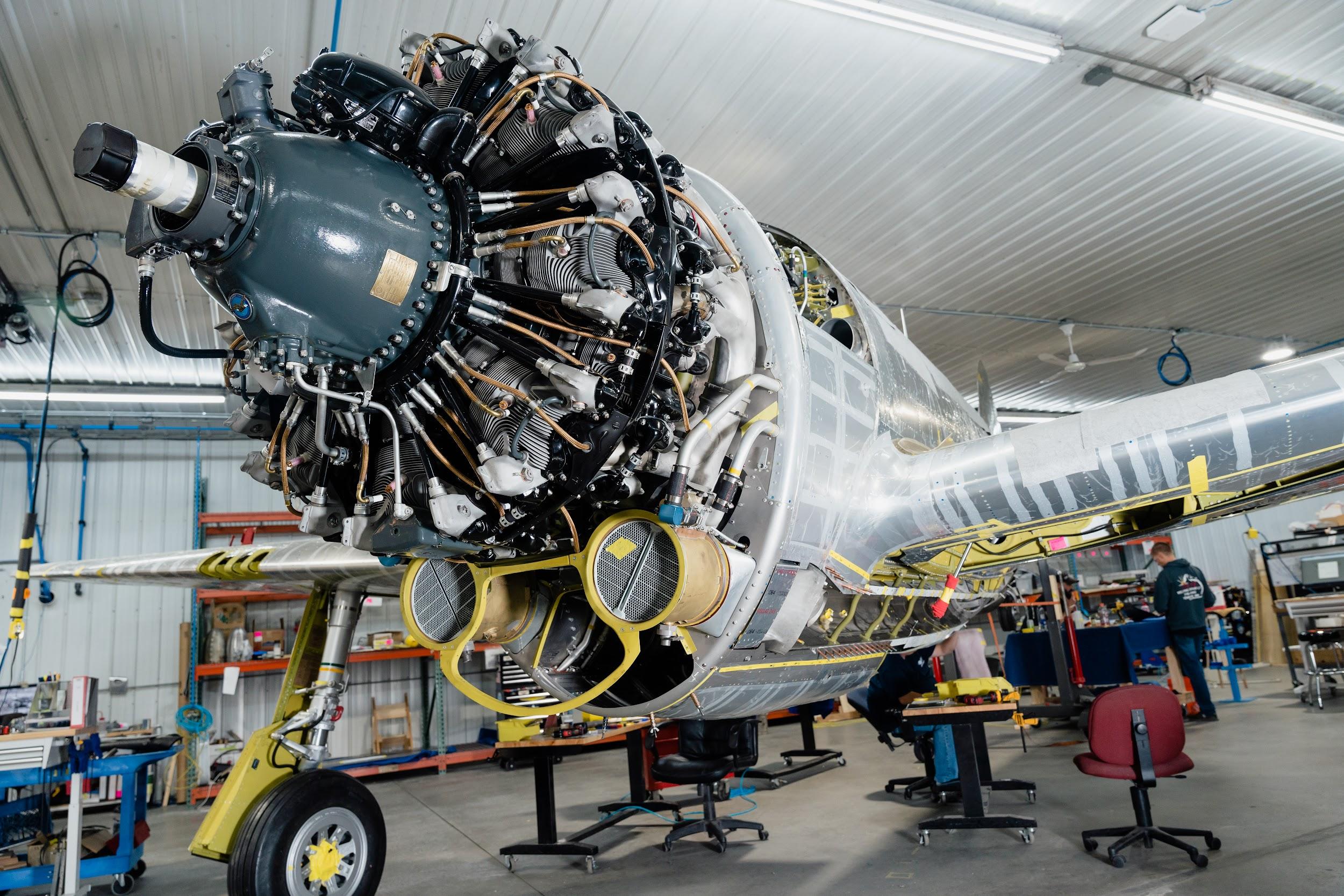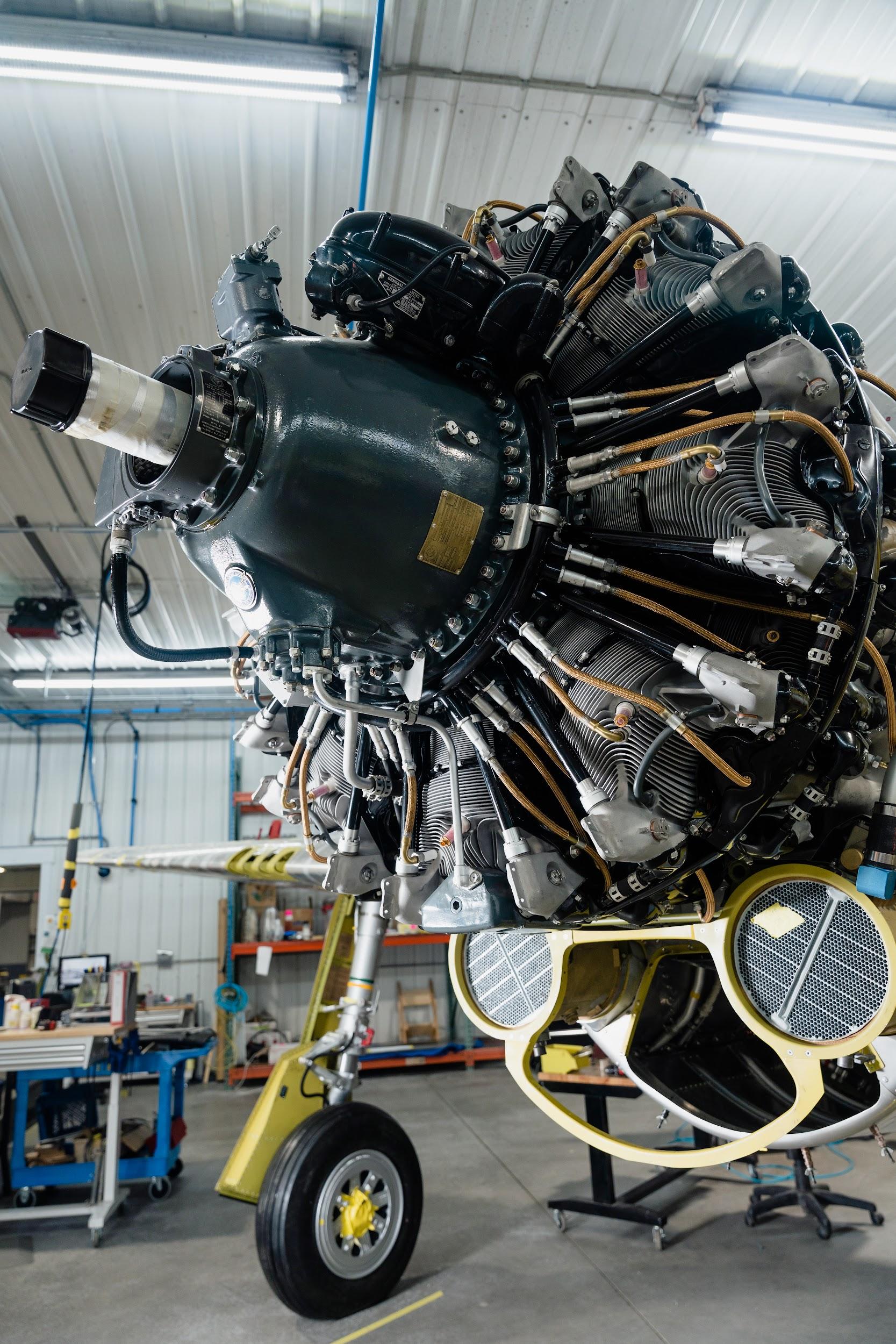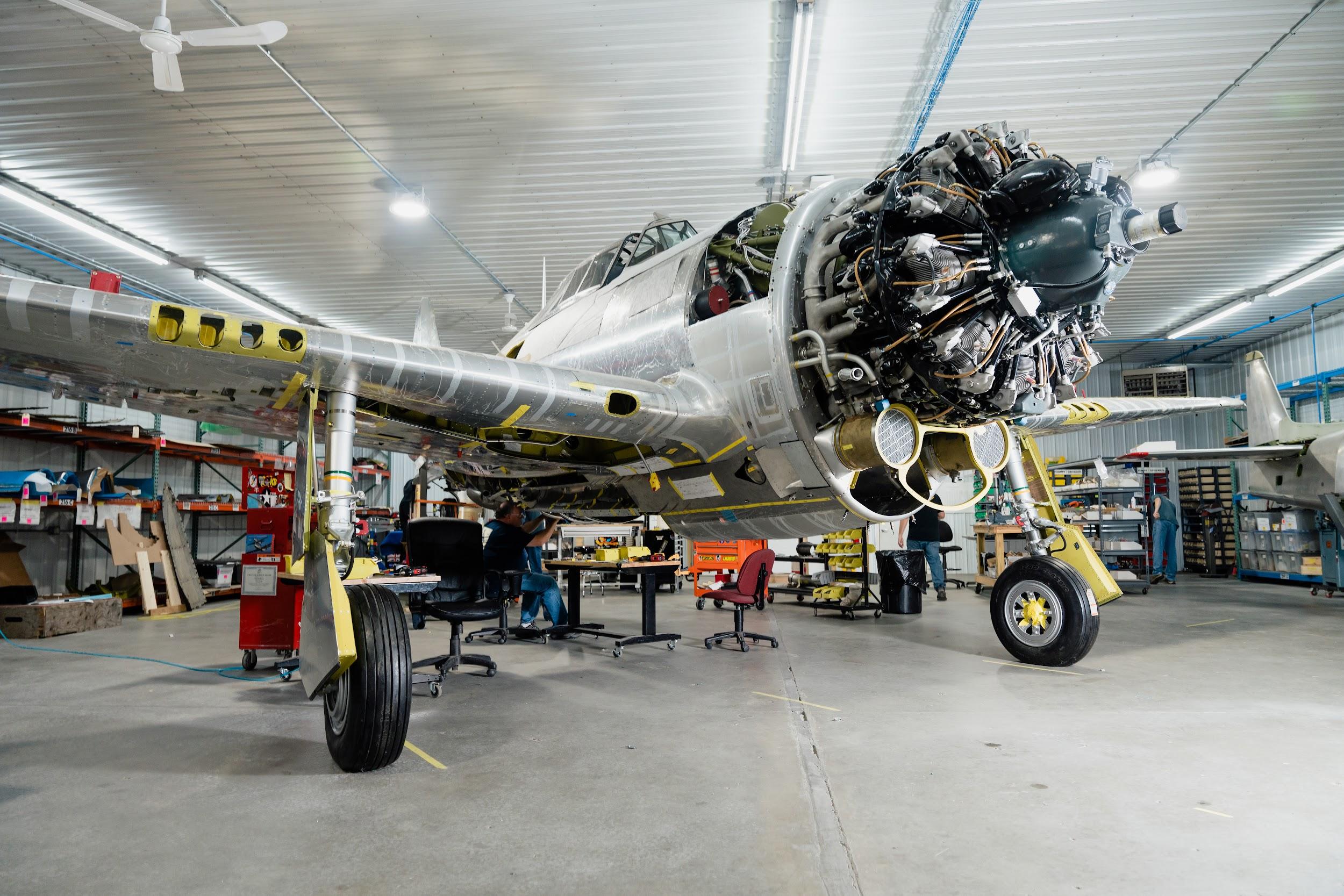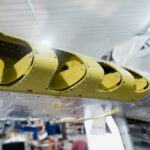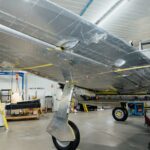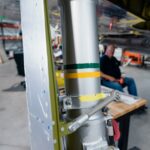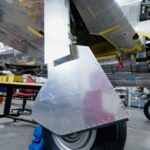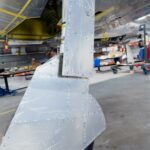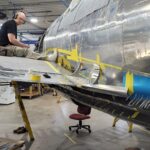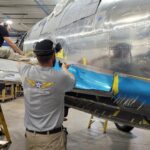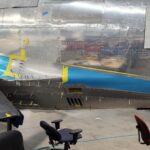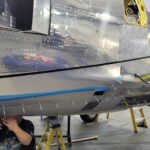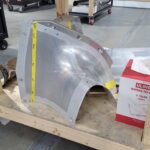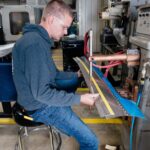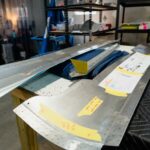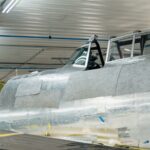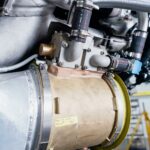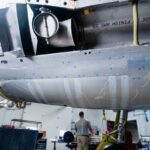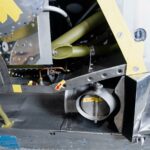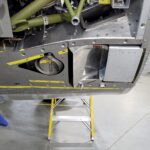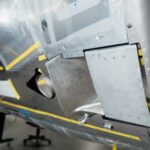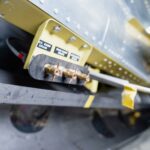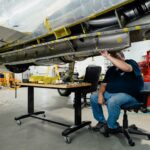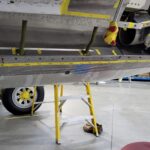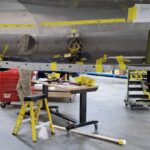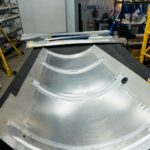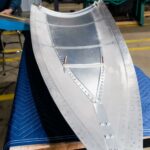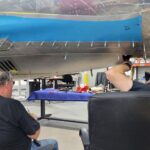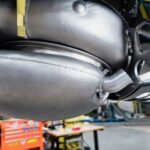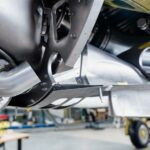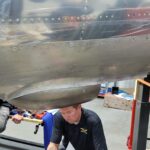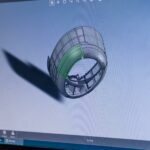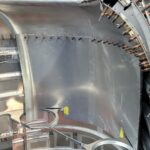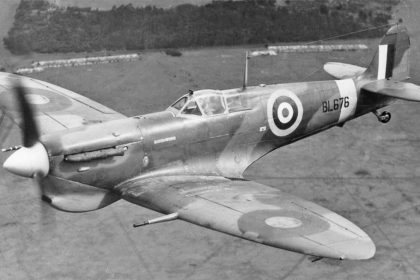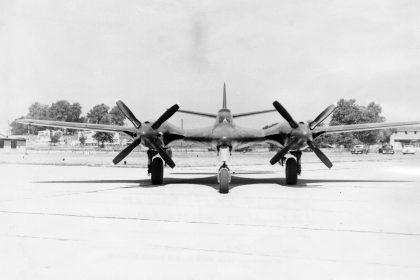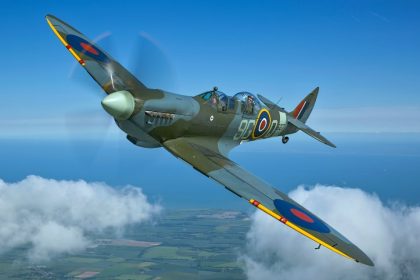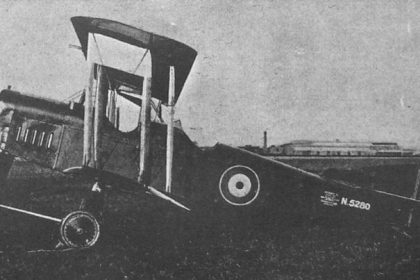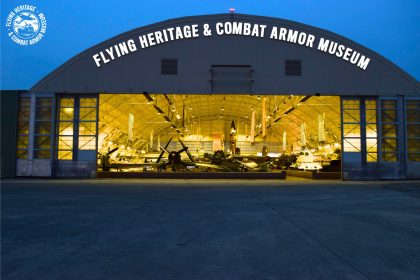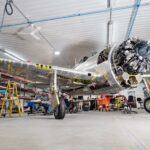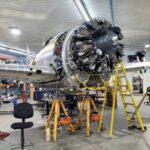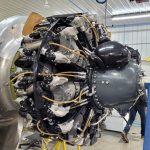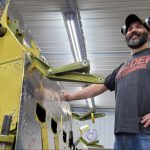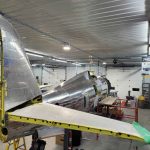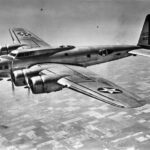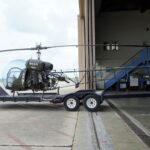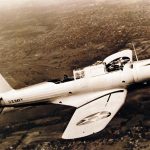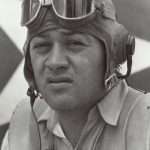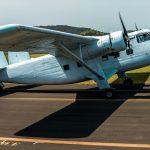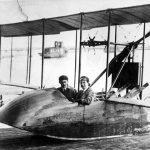Vintage Aviation News has received the August/September, 2022 report from Chuck Cravens concerning the restoration of the Dakota Territory Air Museum’s P-47D Thunderbolt 42-27609 at AirCorps Aviation in Bemidji, Minnesota. We thought our readers would be very interested to see how the project has progressed since our last article on this important project. So without further ado, here it goes!
Update
In late August and early September wing root fairings, and final main landing gear preparation were important aspects of the restoration work. The skins for the fuselage underside, the ducting covers, and the cowling also received a lot of attention.
[wbn_ads_google_one]
Wings and Landing Gear
Most work on the wings this month related to finalizing the main landing gear installation and fitting the wing root fairings.
[wbn_ads_google_one]
Fuselage
Some of fuselage system connections were finalized this month, but the main focus involved the ducting and outer belly skins underneath the fuselage.
[wbn_ads_google_one]
Cowling
Mike’s work on the cowling is progressing nicely.
P-47 Bombing Tactics in the Pacific Theatre
P-47 units in the Southwest Pacific used a variety of ordnance delivery techniques.
Glide Bombing
Glide bombing is a tactic which employs a reduced dive angle and power reduction to manage speed while delivering ordnance on target.
Glide bombing experiments began when pilots found that dive bombing in a P-47 wasn’t particularly effective. The problem with dive bombing was that the Thunderbolt gained too much speed in a dive. Dedicated dive bombers are able to control their speed with the use of dive brakes, a device which the P-47 lacked. For dive angles of 60° or more, necessary for accuracy, the P-47’s velocity would build up excessively, making aircraft control unmanageable. Furthermore, when Thunderbolts carried wing-mounted 1,000lb bombs or 165 gallon drop tanks, aileron buffeting would occur for dive speeds over 325 to 350 mph1 .
1 Tony Holmes, Twelve to One,V Fighter Command Aces of the Pacific, Osprey Publishing, Midland House,West Way,Botley, Oxford, UK 2004, p.79
[wbn_ads_google_one]
However, the switch to glide bombing was not without difficulties, with the disadvantage being that the aircraft is exposed to enemy ground fire for a longer period in a shallow dive, as opposed to a steeper example.
According to Colonel Gwen G. Atkinson, commanding officer for the 58th Fighter Group from December 1942 until January 1945, in order to minimize losses to ground fire, it was necessary to begin the glide at no less than 15,000 feet, hold airspeed down to below 325 mph, release the bombs between 7,000 and 5,000 feet, and either head for the deck or recover sharply up and to one side.2
Skip Bombing
Skip bombing was another weapons delivery tactic which Pacific Theater P-47 pilots used, dropping ordnance from tree top or mast head altitude. The pilot would approach in a very shallow dive, keeping his speed at about 370 mph while carrying a single 500 pound bomb or under 325 mph if loaded with the aileron-buffet-inducing 1,000lb bombs or 165 gallon wing tanks. As the P-47 pilot approached the target, he would fire all eight .50 caliber machine guns, an effective method for suppressing ground fire. Leveling off at about 50 feet and releasing the bomb load, the bombs would skip over the ground or water surface, allowing the ordnance to stay low enough to impact the side of a ship or building.
2 Tony Holmes, Twelve to One,V Fighter Command Aces of the Pacific, Osprey Publishing, Midland House,West Way,Botley, Oxford, UK 2004, p.79
Lieutenant Colonel Willaim Banks (Deputy Commander of the 348th Fighter Group) described a skip bombing attack on shipping in Fighter Combat Tactics in the Southwest Pacific by Ray Merriam.
“A skip bombing target must be studied whenever possible before the mission, especially against shipping or other targets that may have heavy ack-ack.”
“The attack should be made out of the sun when possible.”
“When the target is sighted, each flight should pick a definite objective. Troop transports can easily be knocked out by two P-47s making a well-timed attack. Destroyers should be attacked by at least four planes.”3
Lt. Col. Banks goes on to say that the approach should be in a fairly steep dive, leveling out in line abreast formation. Strafing should begin a little out of range to confuse and neutralize the enemy gunners. The bombs should be released at the pull-up point of the attack run.
3 Ray Merriam, Fighter Combat Tactics in the Southwest Pacific Area, Merriam Press Bennington, Vermont, 2012.p. 86
And that’s all for this month. We wish to thank AirCorps Aviation and Chuck Cravens for making this report possible, and look forwards to bringing more restoration reports on progress with this rare machine in the coming months.







